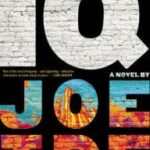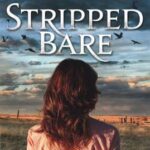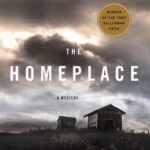In Bookstr.com, Mtfrancis talks about the National Archives use of GIFs to bring scenes to life. To illustrate, there are photos of Walt Whitman, Ernest Hemingway, and Mark Twain. Check it out here. https://www.bookstr.com/article/authors-brought-to-life/2555
Fiction Review
Randy Wayne White at The Poisoned Pen
Randy Wayne White was just in town from Florida, on book tour for Seduced, the fourth Hannah Smith novel.
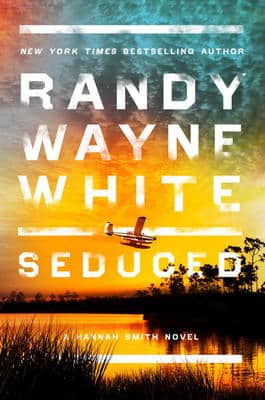
Check out the drink Randy’s carrying as he enters through the audience.
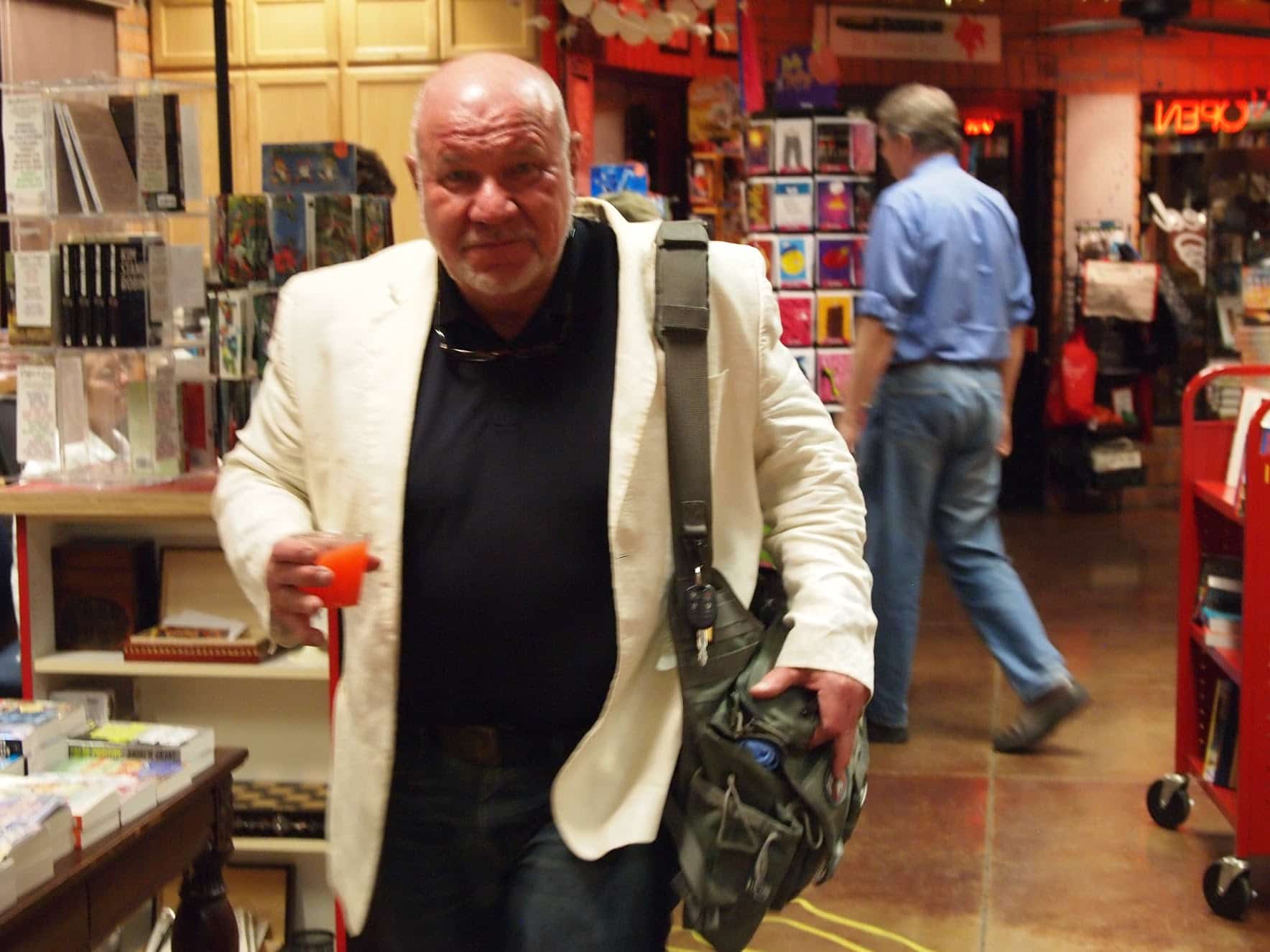
It’s a Tequila Sunrise in honor of the orange juice in the book, Seduced. The audience did get drinks as well.

Randy brought gifts for the audience, too.
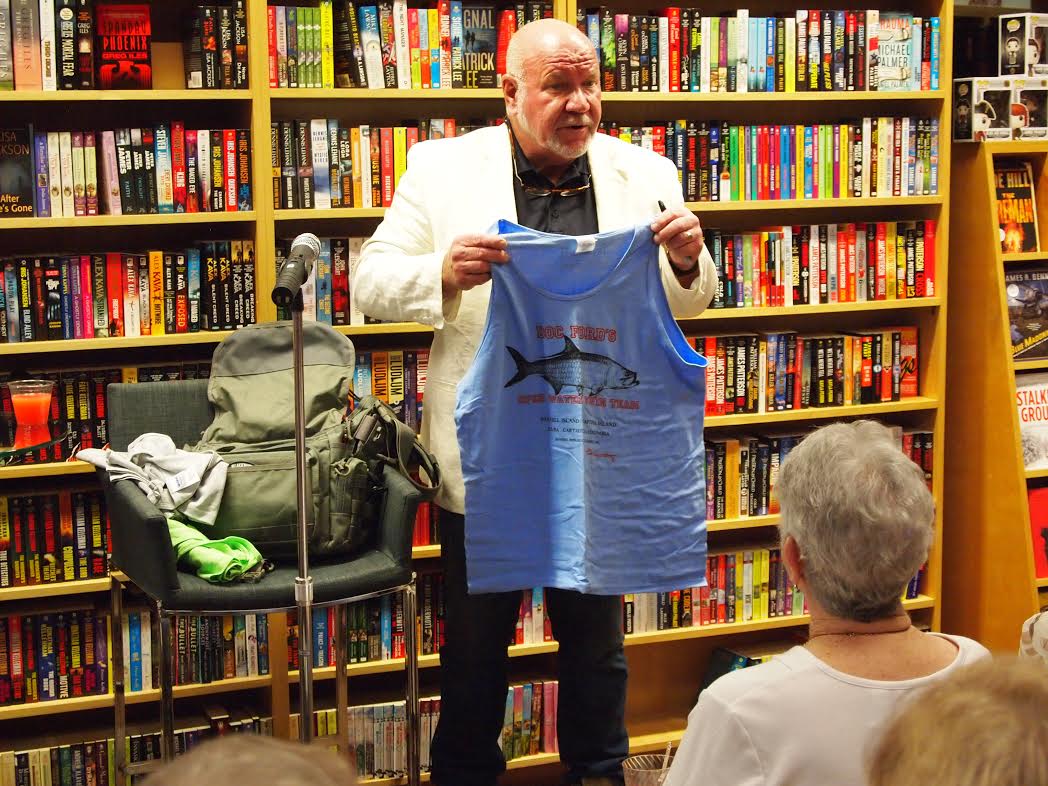
And, he discussed his writing, and answered questions.
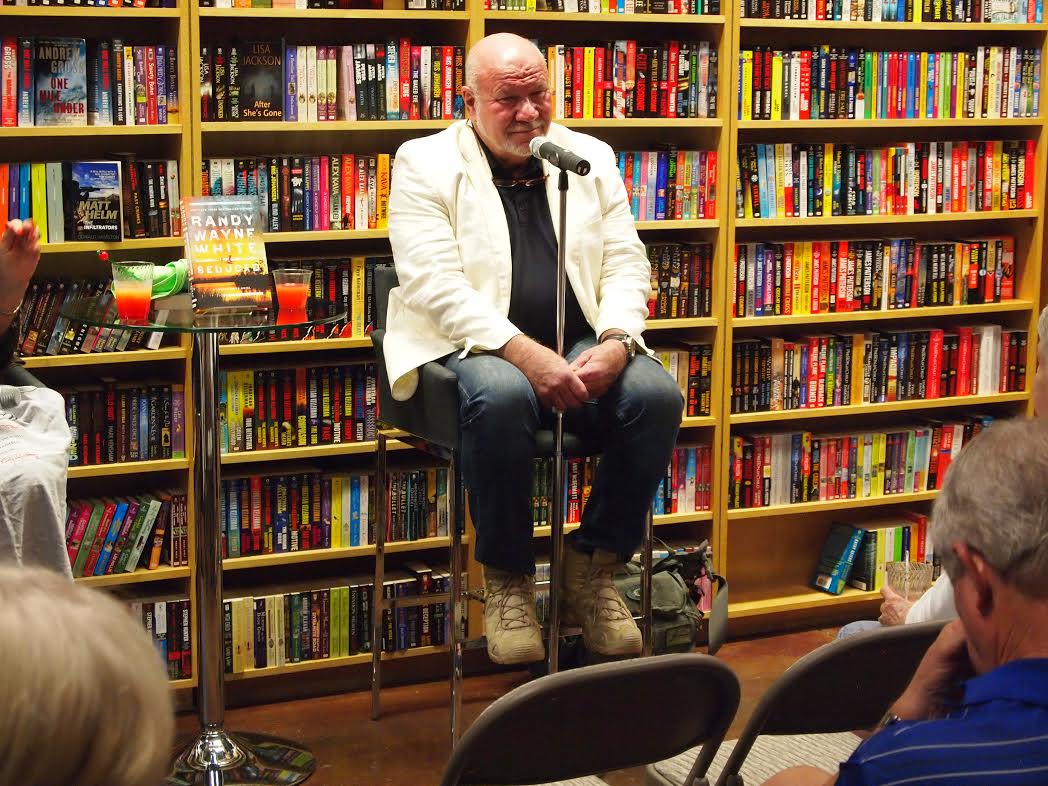
Now, maybe he didn’t answer the same type of questions as he answered on “Wait Wait…Don’t Tell Me” on Oct. 1.
https://www.npr.org/player/embed/496063010/496214691
If you would like to see the event from The Poisoned Pen, you can watch it on Livestream. https://livestream.com/poisonedpen/events/6496855
You can purchase a signed copy of Randy Wayne White’s Seduced through the Web Store. https://bit.ly/2f0ZLoh
Lincoln Child & Douglas Preston Competition
Although we have photos from The Poisoned Pen program featuring Lincoln Child & Douglas Preston’s new Agent Pendergast novel, The Obsidian Chamber, we really should start with the competition between the two authors.
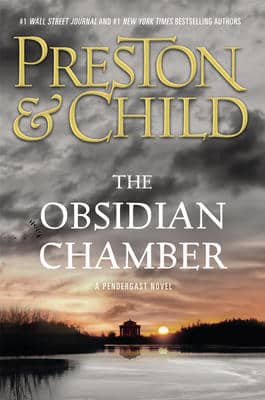
Lincoln Child signed 4,000 copies of The Obsidian Chamber in New York for The Poisoned Pen. Naturally, when Douglas Preston came to the store, he tried to out-do his fellow author. We have video of both signings. Here’s The Poisoned Pen’s e-news about the event:
How much fun is this?
Enjoy two time-lapse videos: one of Lincoln Child signing 4000 copies of The Obsidian Chamber (Grand Central $27) in New York City at the beginning of October to ship to The Pen. 7 hours of work compressed into 1.5 minutes. Watch Lincoln at work here. https://www.facebook.com/PrestonandChild/videos/1104170919619402/
So Lincoln ignited a contest with Doug for the best time, and best video.
The time was roughly a tie. Our video of Doug signing the books has an extra. You can spot it (them) HERE. https://livestream.com/poisonedpen/events/6517784 Note; we will work to slow it down a little so you can enjoy the surprises more. There’s a leaning curve involved for us.
And you can watch a Livestream of what become a rather raucous event as Lincoln wielded a bullhorn when he felt like it, and our laptop computer handling the Skype decided to reboot itself mid-program. Oy. https://livestream.com/poisonedpen/events/6514290. Lincoln Child, who has already signed all our copies, appears by Skype
Our copies come with a postcard of the Pendergast coat of arms. You can order the signed copies of The Obsidian Chamber here. https://bit.ly/2dSS3bL We also have signed copies of earlier Pendergasts and Gideon Crew thriller by Preston & Child. You can order them through the Web Store. https://bit.ly/2eyp0di
Now, if you don’t want to watch the Livestream, or if you’d like to see a few photos from the program, we have those as well.
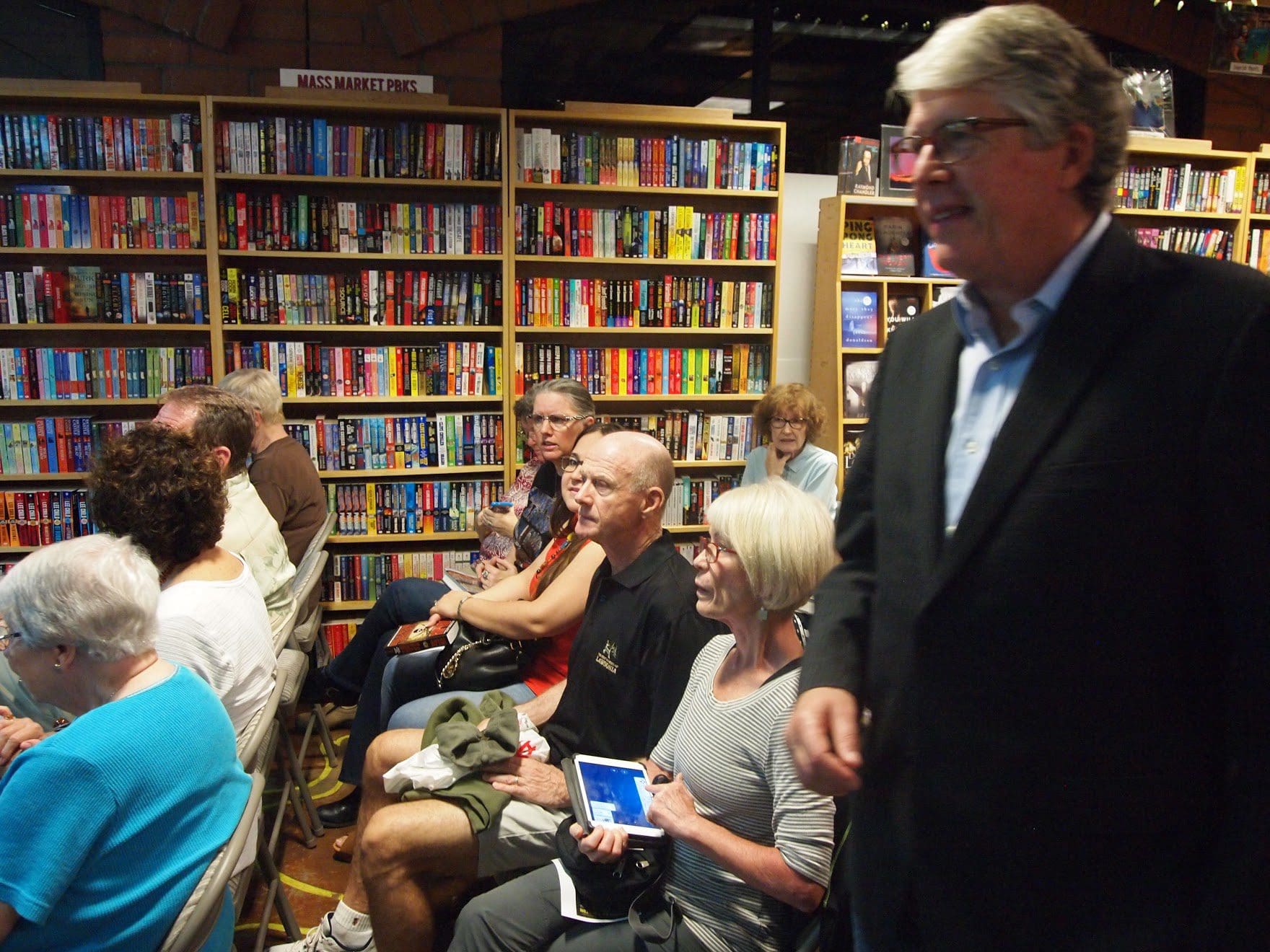
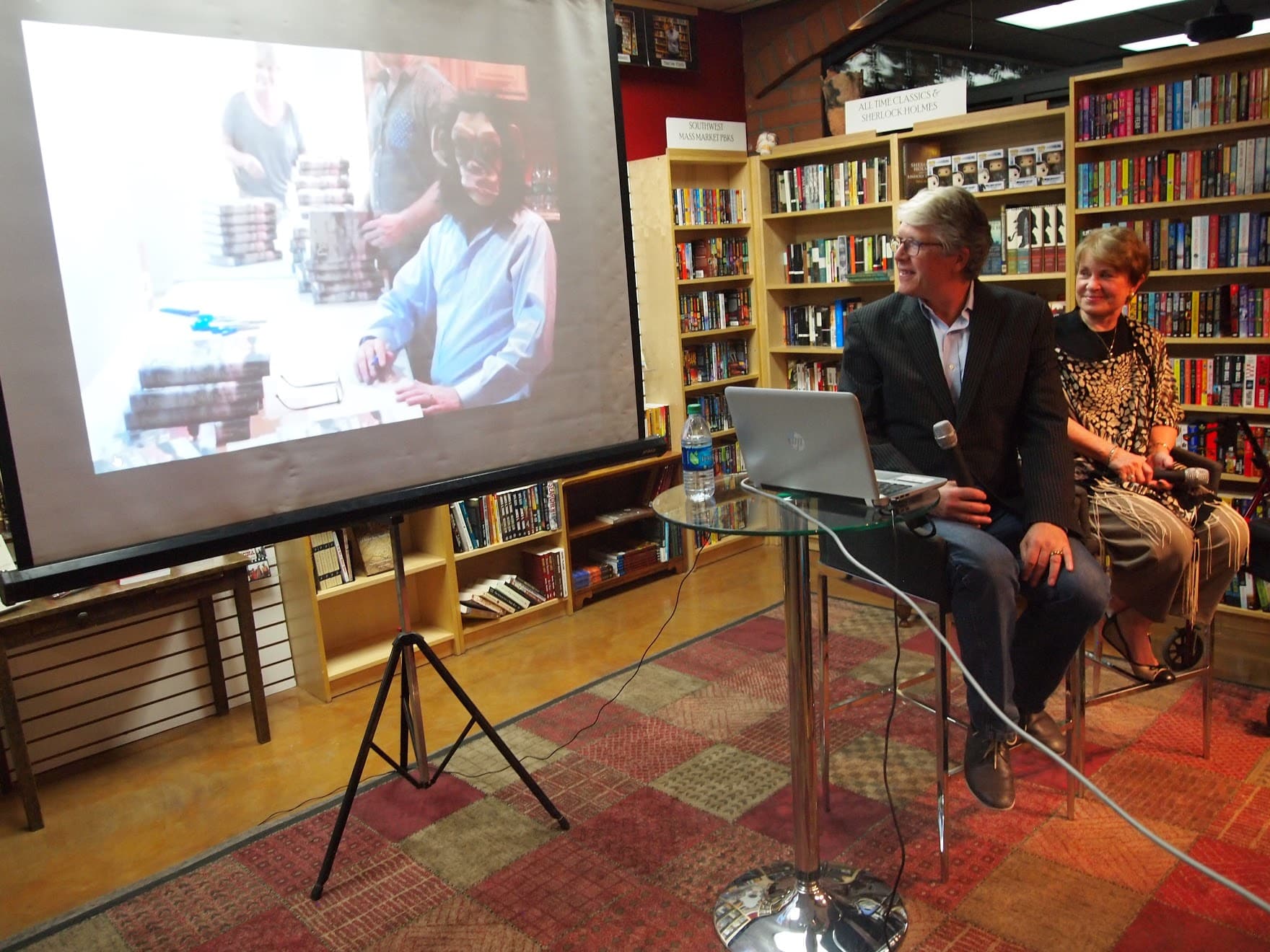
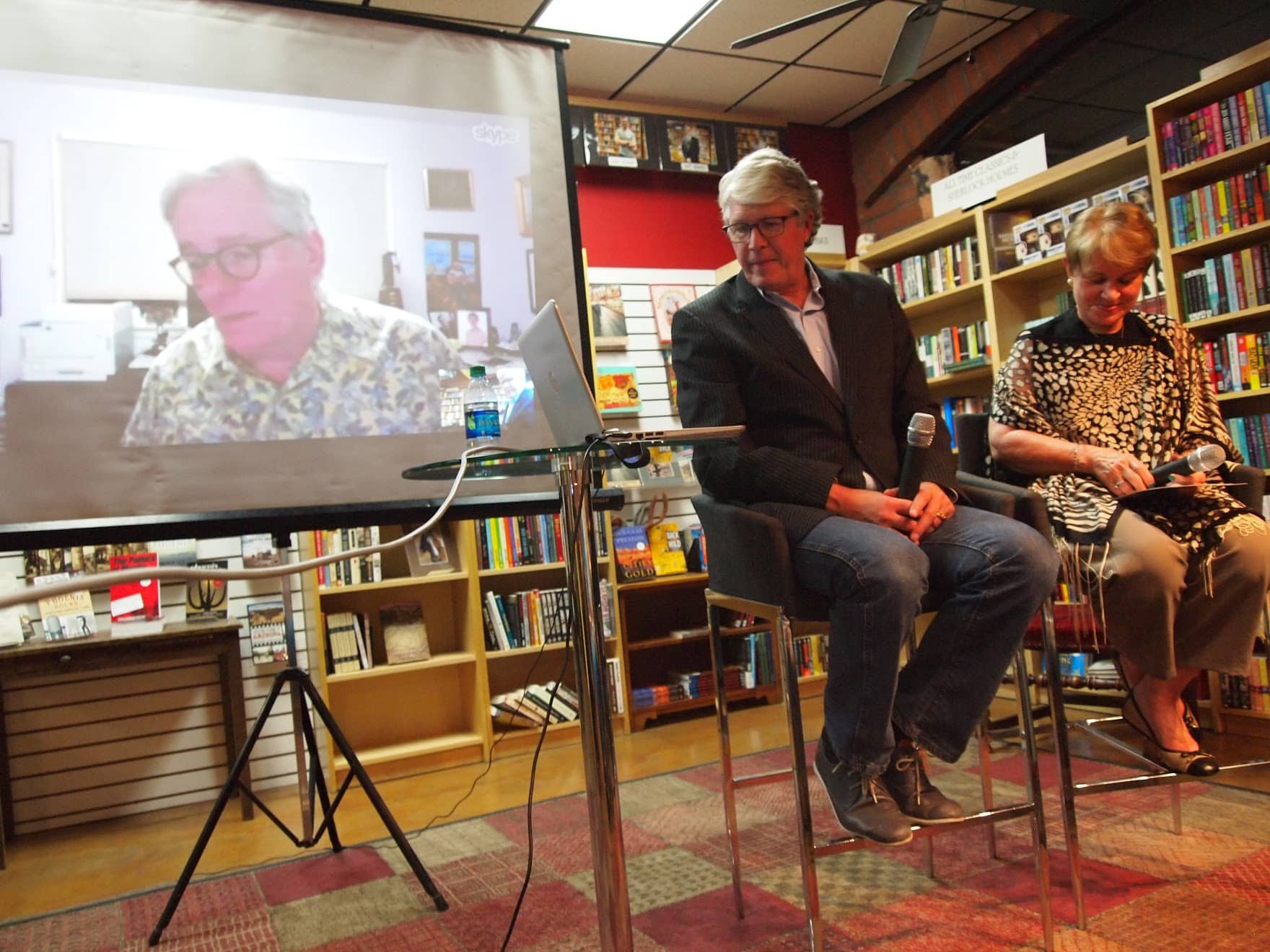
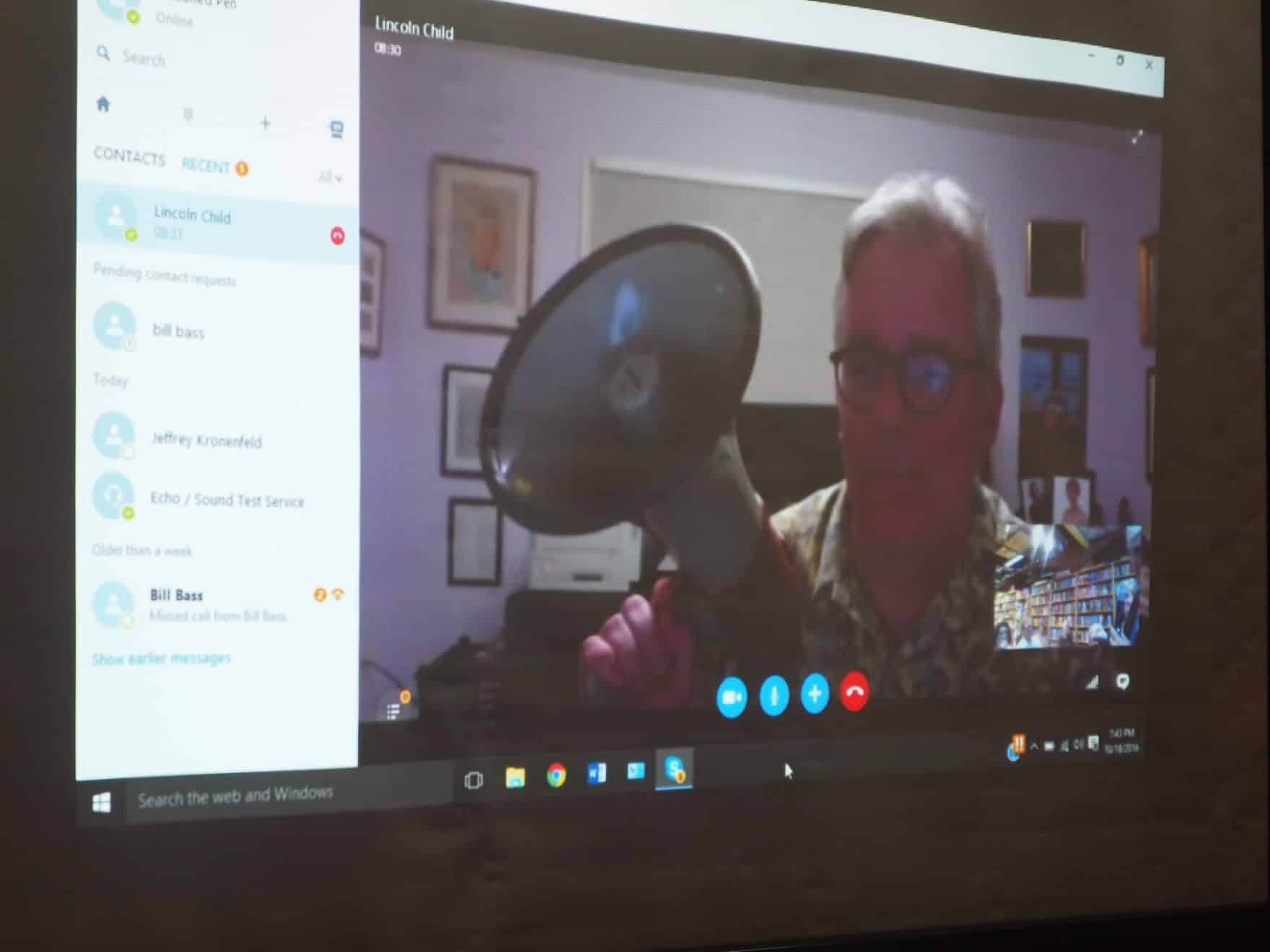
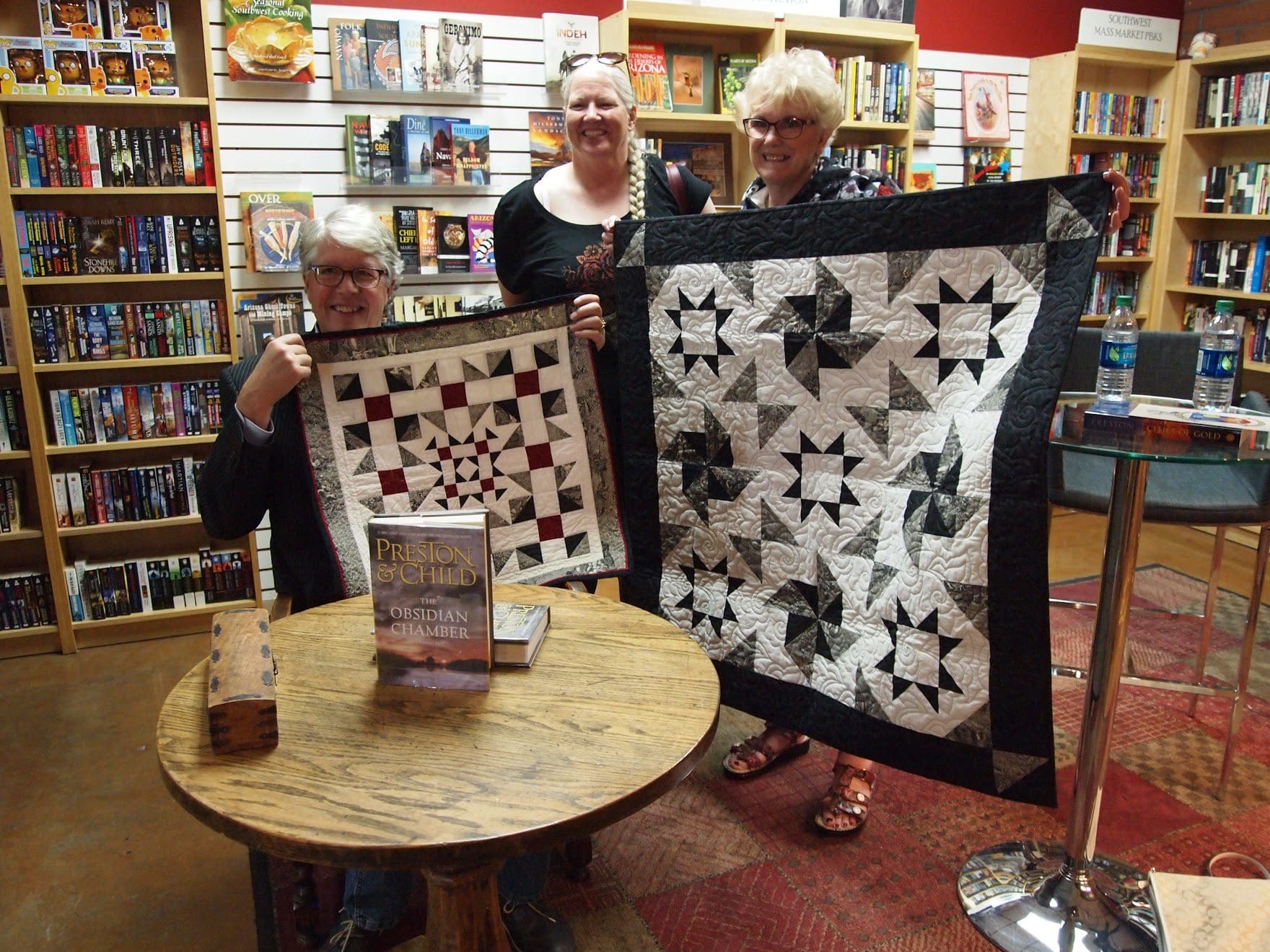
Sandford and Ide at The Poisoned Pen
It’s always nice to see a debut author meet an established author’s audience. I remember when Lee Child introduced debut author Cornelia Read at The Poisoned Pen. This time, debut author Joe Ide, author of IQ, shared the stage with John Sandford who is on book tour for Escape Clause, the ninth Virgil Flowers novel.
We have photos, beginning with the authors in the back room.
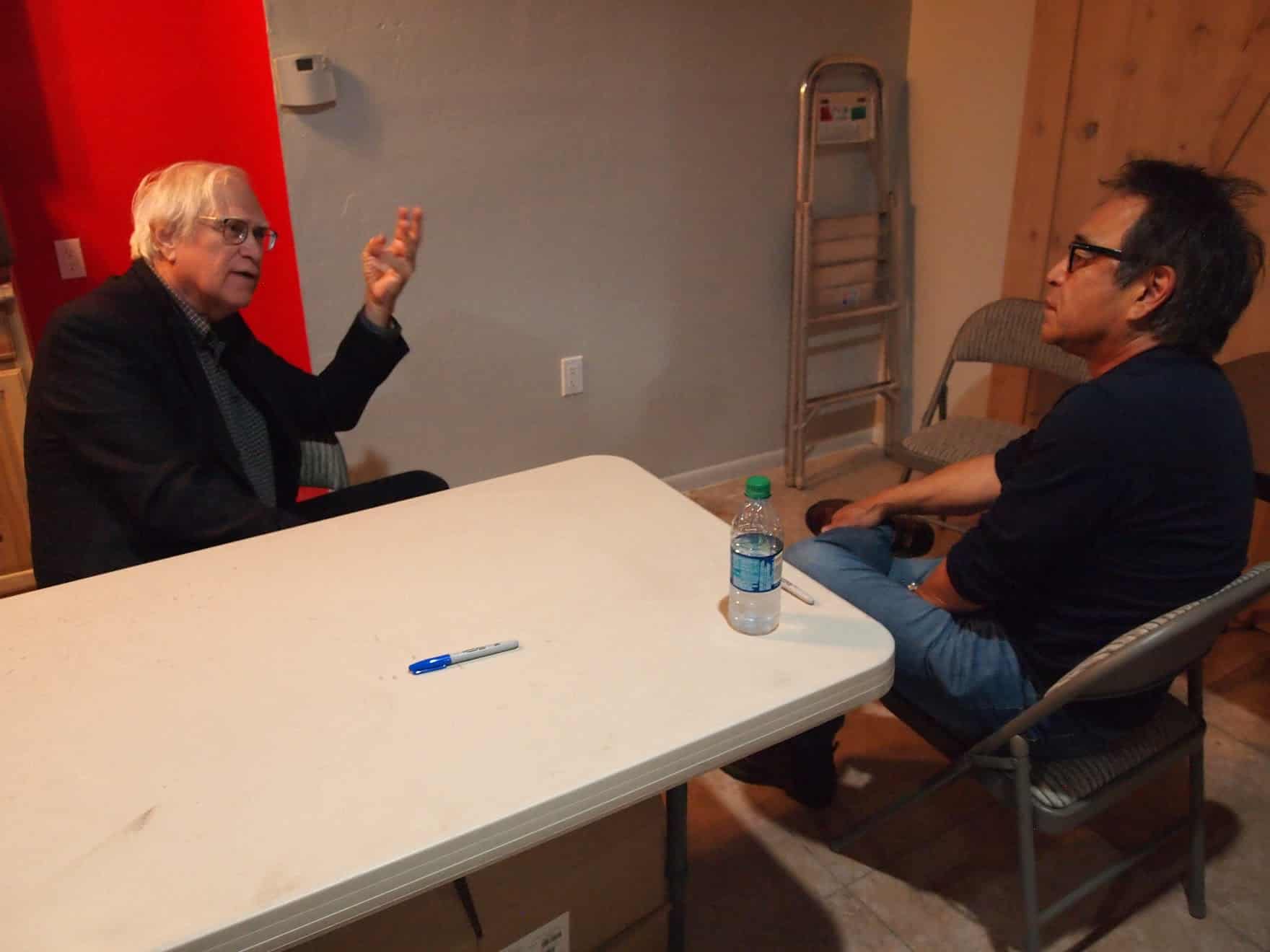
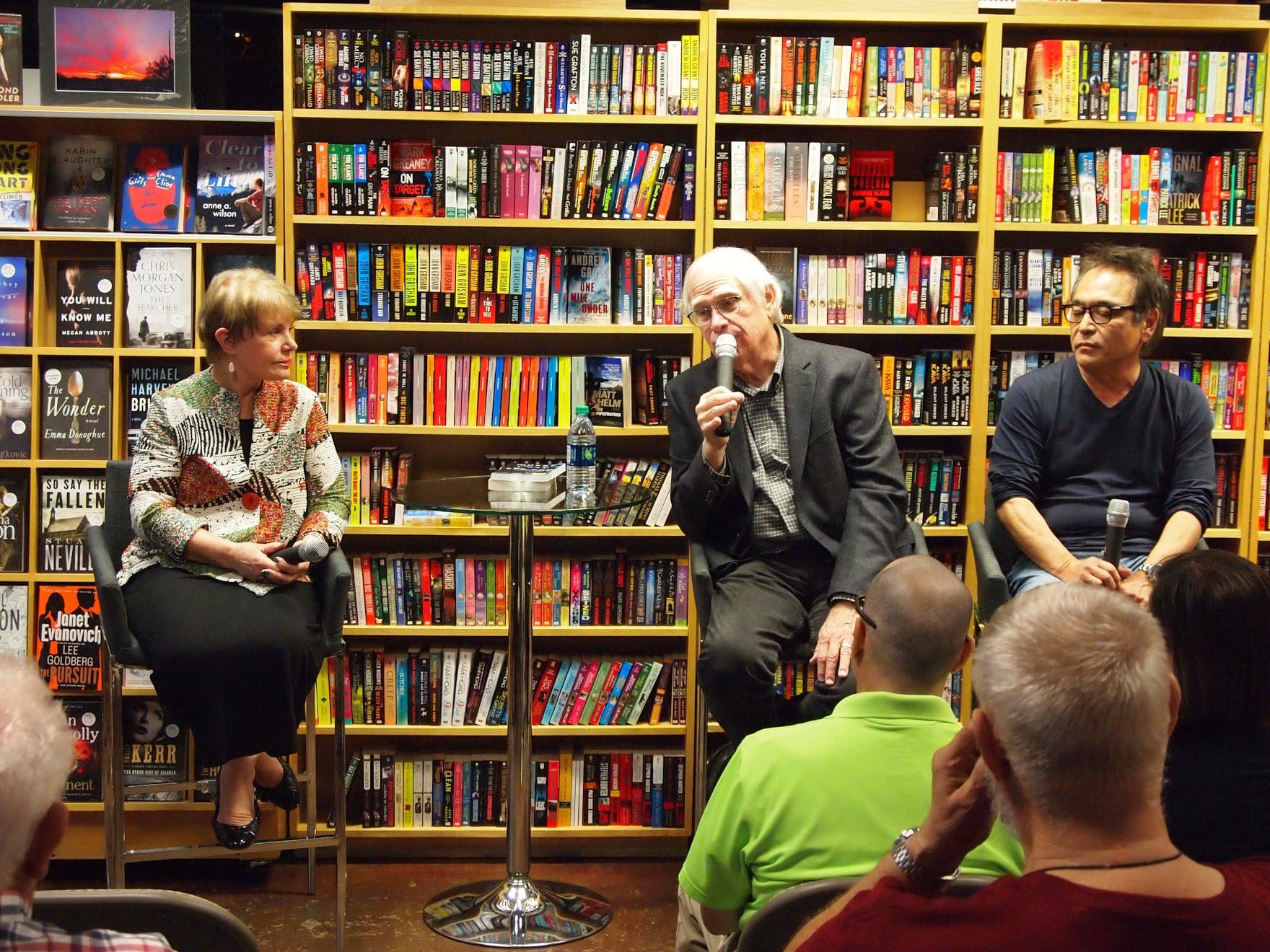

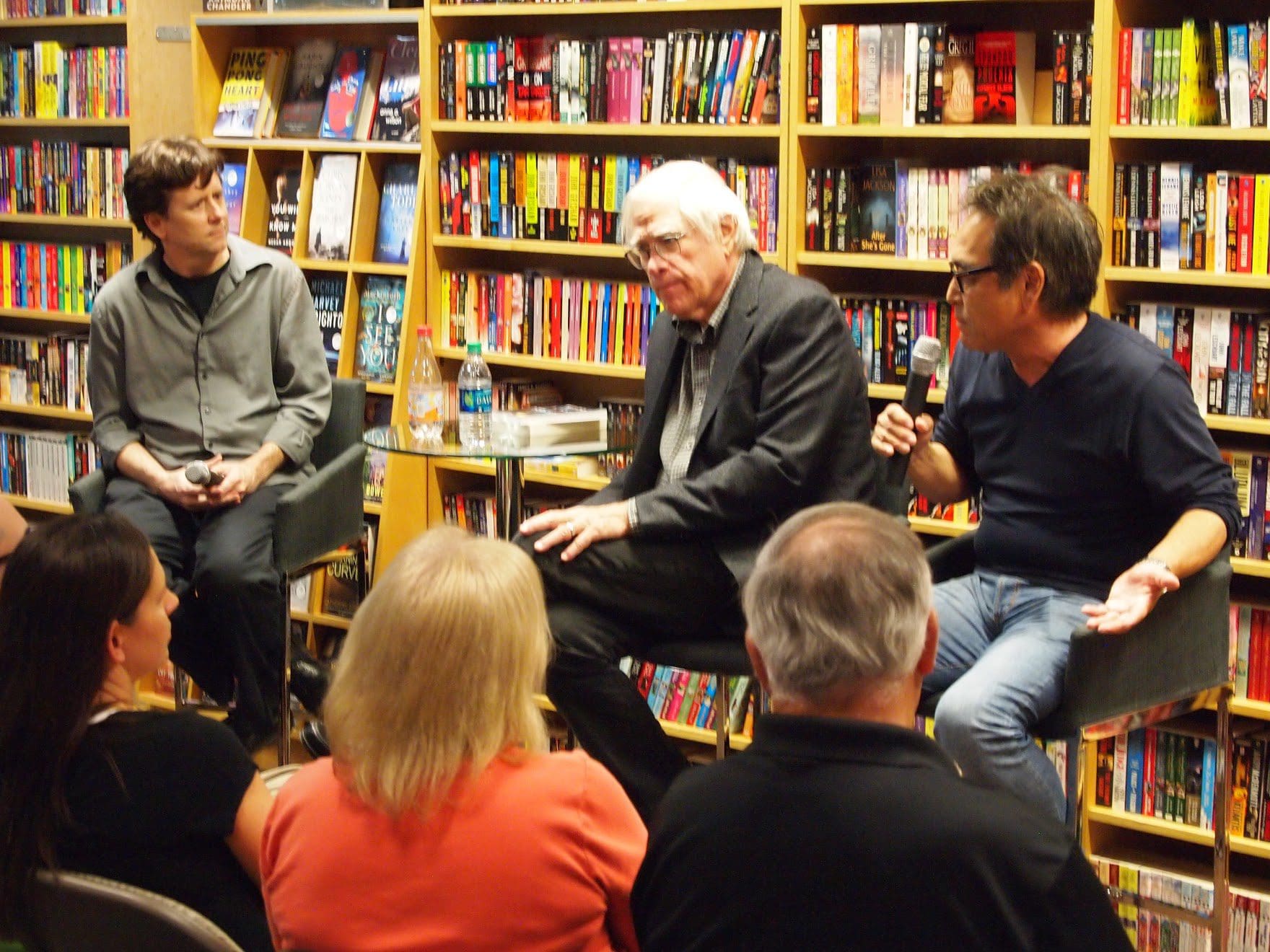
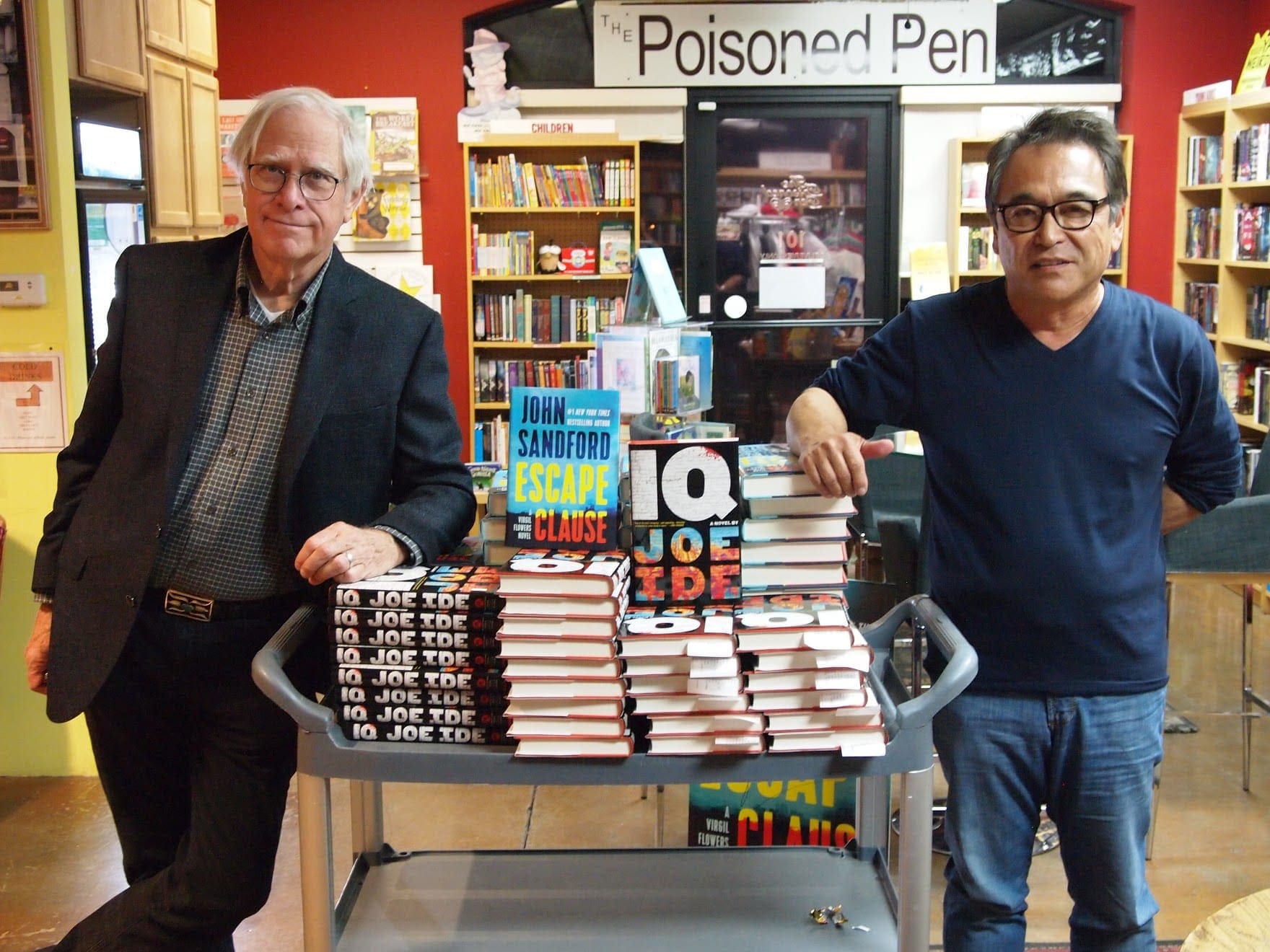
You can actually see the event, and hear both authors, via Livestream. https://livestream.com/poisonedpen/events/6463472/videos/139171605
And, don’t forget to pick up your signed copies of Escape Clause and IQ through the Web Store. https://store.poisonedpen.com
Crime Writers at Bouchercon
I realized I never shared some of the photos of crime writers at Bouchercon in New Orleans. It’s a wonderful conference, and a great place to run into favorite authors. So, today, just some pictures of authors you may read, and not recognize. Don’t forget to look for their books in the Web Store! https://store.poisonedpen.com
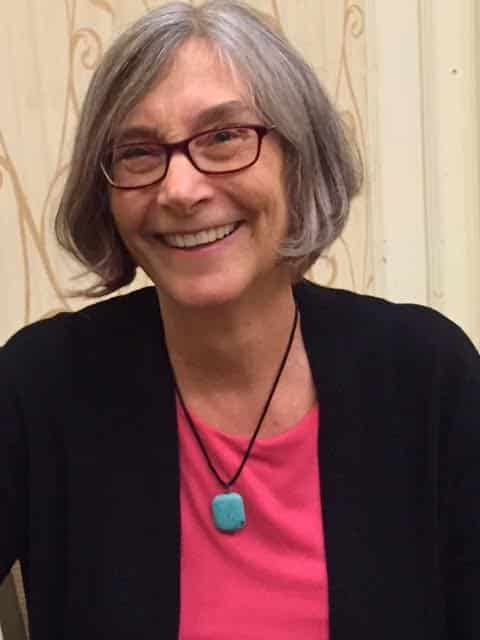
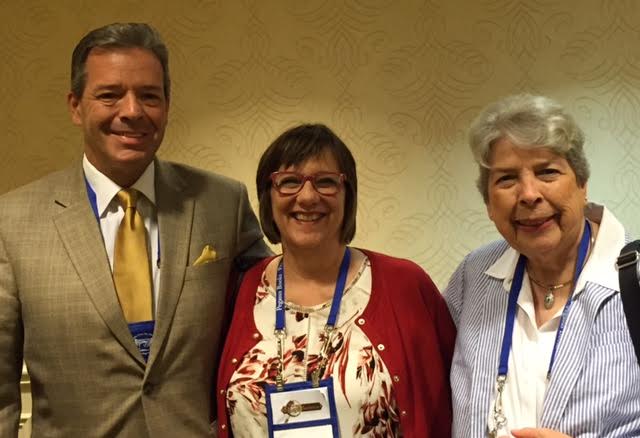
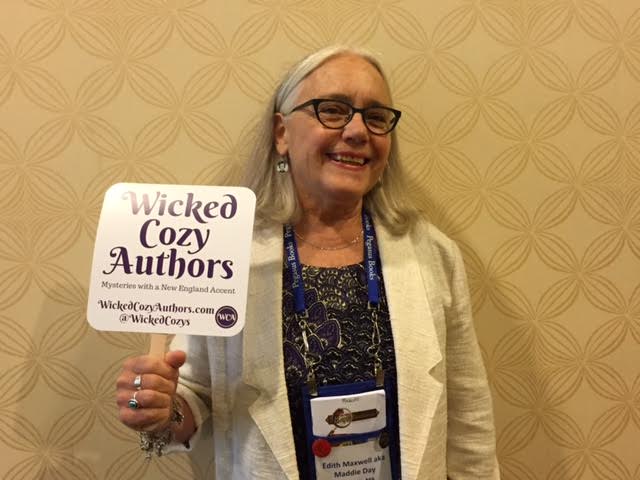












“A Series of Unfortunate Events”
A teaser clip has been released for Netflix’s upcoming adaptation of Lemony Snicket’s A Series of Unfortunate Events that is “so unnerving that it’s caused jolly cut-up Patrick Warburton to become super-serious,” Yahoo News wrote. https://yhoo.it/2ecrCRN “In this new clip teasing the eight-episode series, which premieres on January 13, 2017, the former Tick steps assumes the role of the narrator for these Unfortunate Events, Lemony Snicket, who chronicled the sad case of the Baudelaire orphans over the course of 13 books…. In the middle of his stone-faced soliloquy, the actor is interrupted from off-screen by a maniacally happy singer who sounds an awful lot like Neil Patrick Harris, who plays the orphans’ sinister guardian and constant nemesis, Count Olaf.””
If you want to be prepared before the series comes out, you can buy Lemony Snicket’s books through the Web Store. https://bit.ly/2dJUVHV
Procrastination with Paula Hawkins
Ever wonder how authors procrastinate when they should be writing? Paula Hawkins, author of The Girl on the Train, talks about what she does in this Author Shorts.
Baker, Mizushima & Wolf at The Poisoned Pen
It was a busy evening when Barbara Peters, owner of The Poisoned Pen, hosted three authors. Margaret Mizushima, author of Stalking Ground: A Timber Creek K-9 Mystery, was joined by two debut authors. Shannon Baker wrote Stripped Bare, and Kevin Wolf wrote The Homeplace.
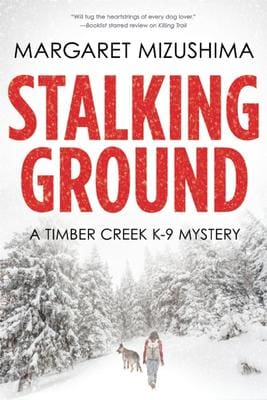
If you weren’t able to make it to the event, you might want to see the photos.
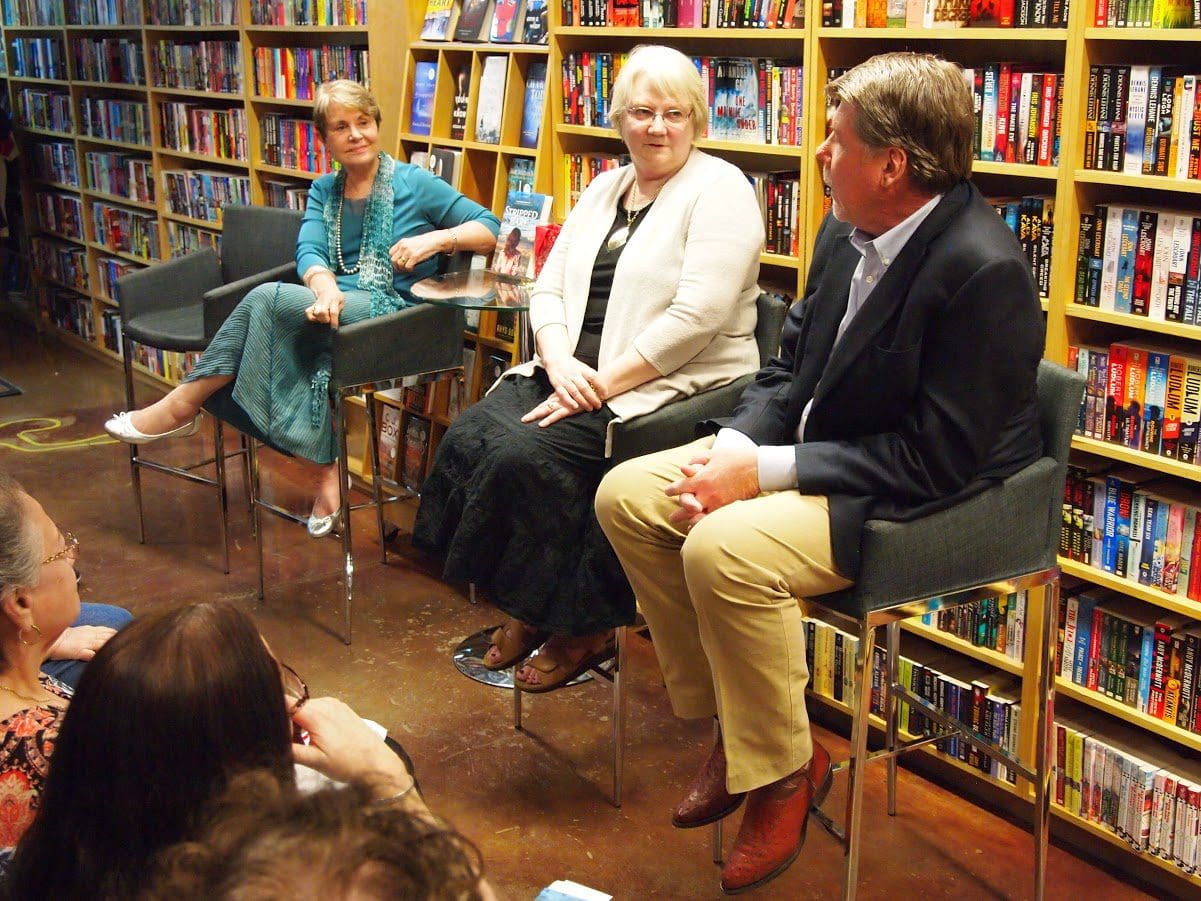
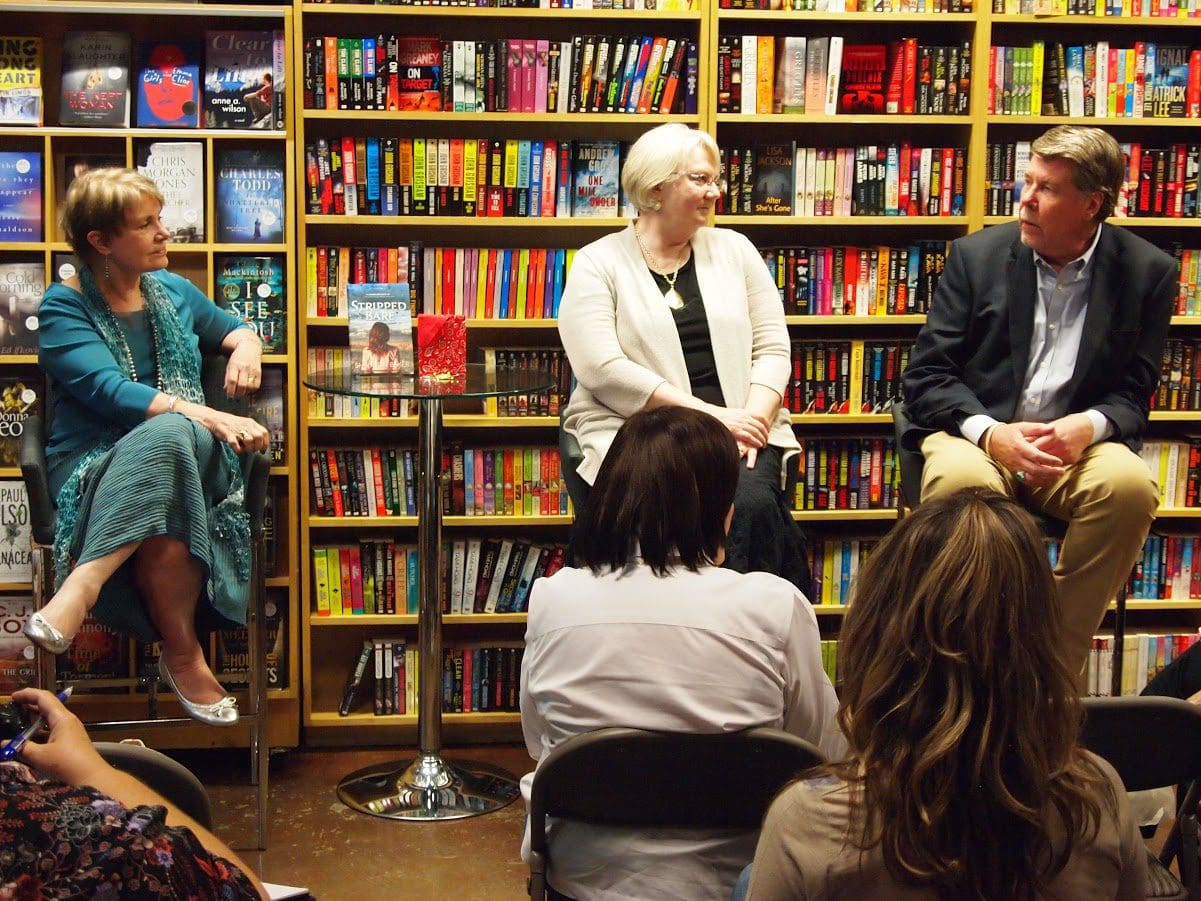
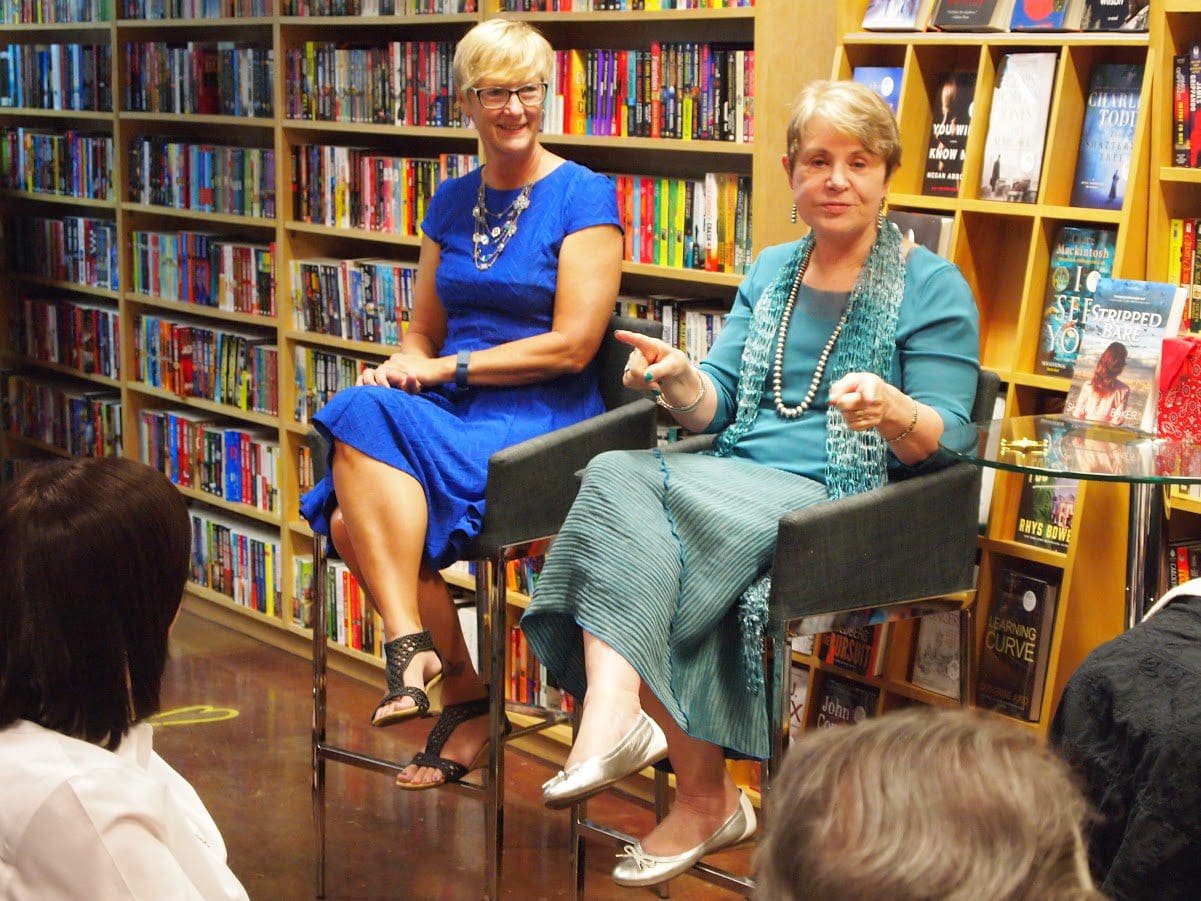
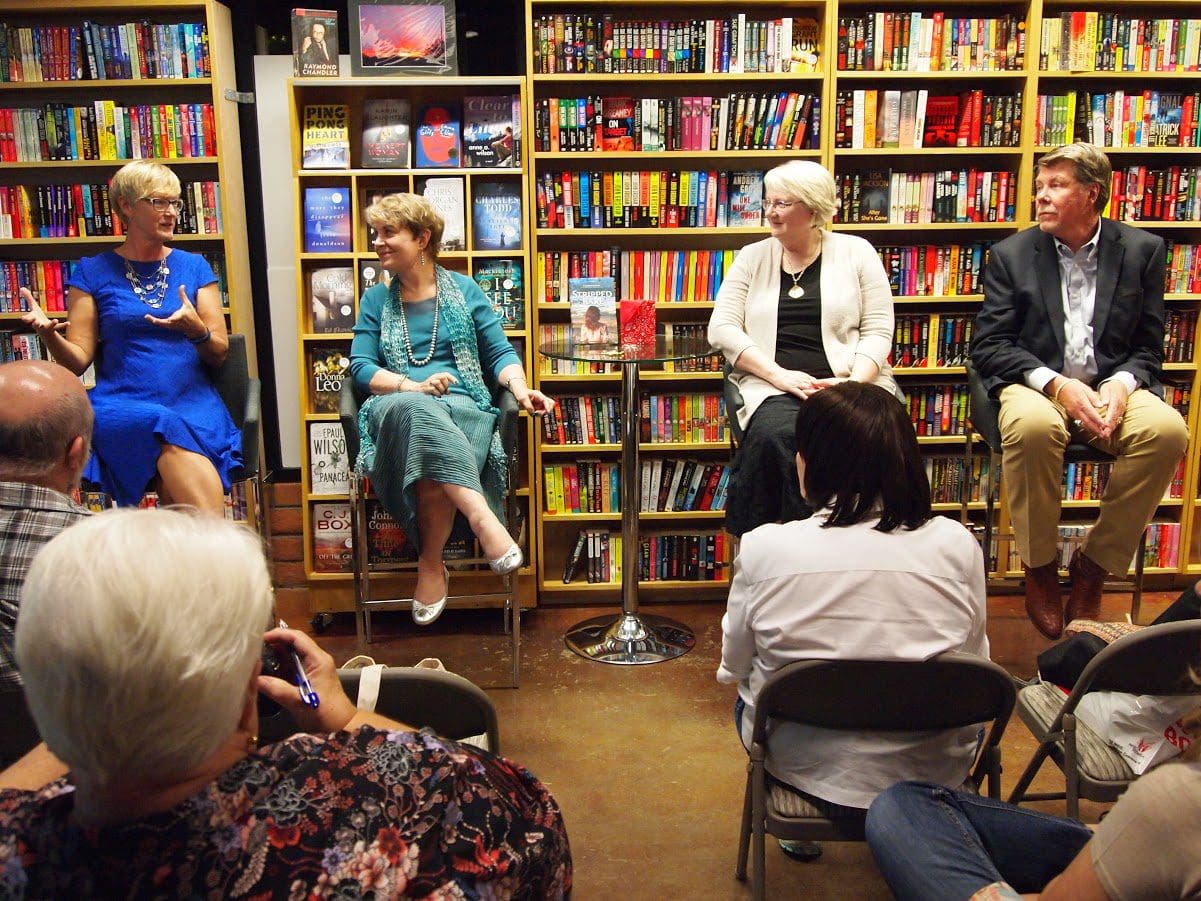

Of course, we have signed copies of the books by all the authors, available for purchase through the Web Store. https://store.poisonedpen.com/
Kevin Hearne at The Poisoned Pen
I wish I could have been at The Poisoned Pen to welcome Kevin Hearne back to town. The author of The Iron Druid Chronicles has a new book, The Purloined Poodle, part of the mystery series featuring Oberon, the Irish Wolfhound. If you’re a fan, you’ll like the photos of Kevin with an Irish Wolfhound, and signing a Celtic sword.
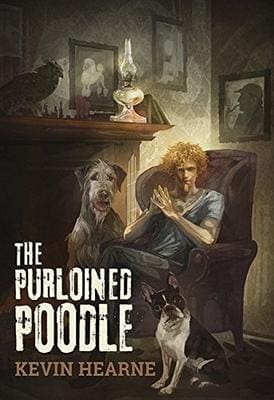
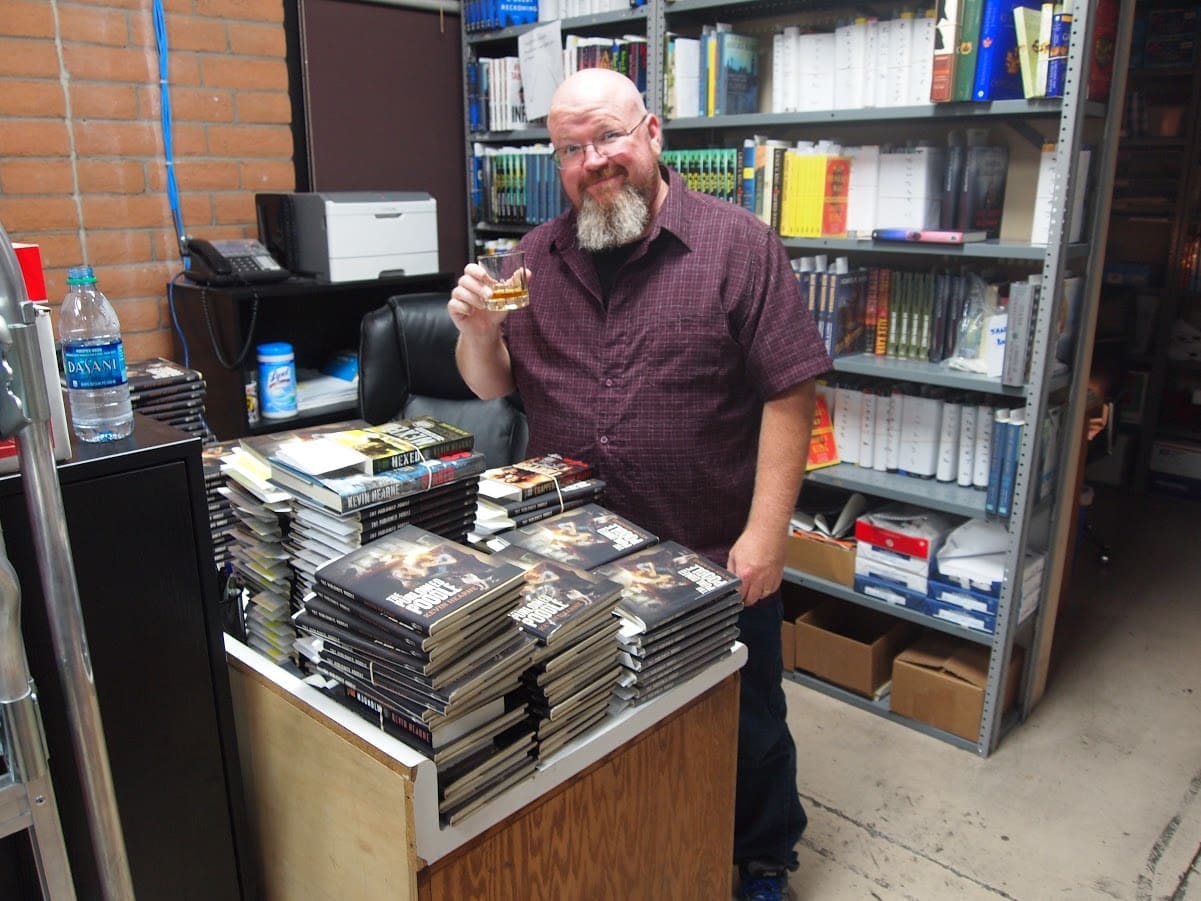
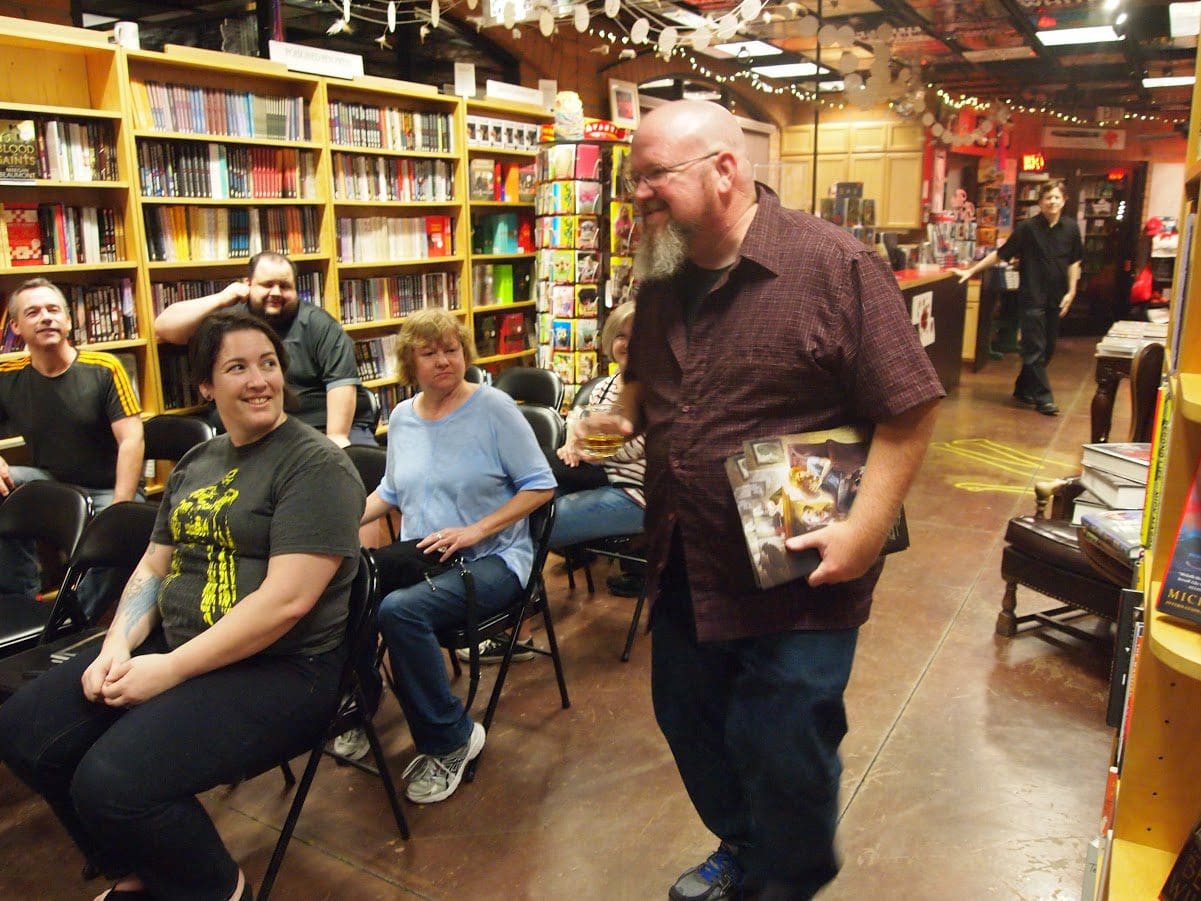
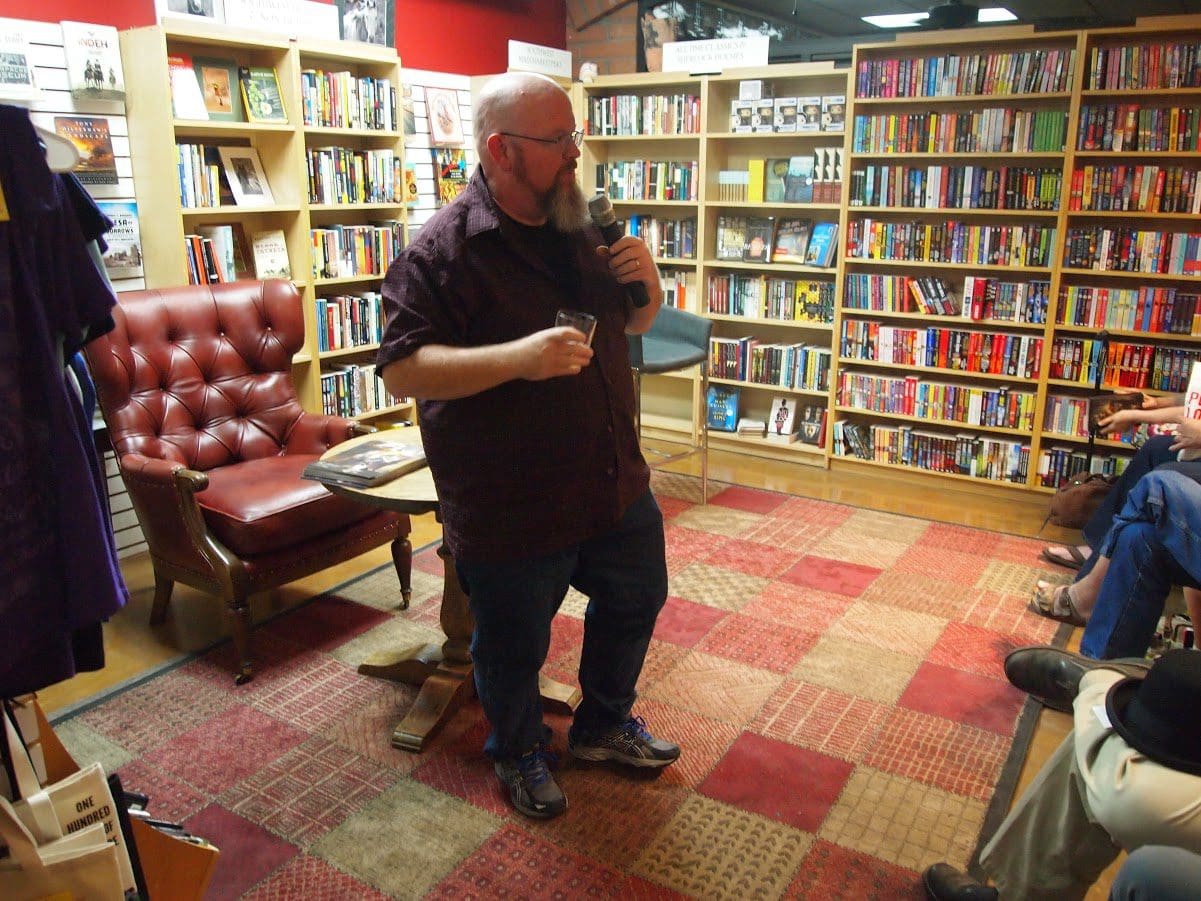
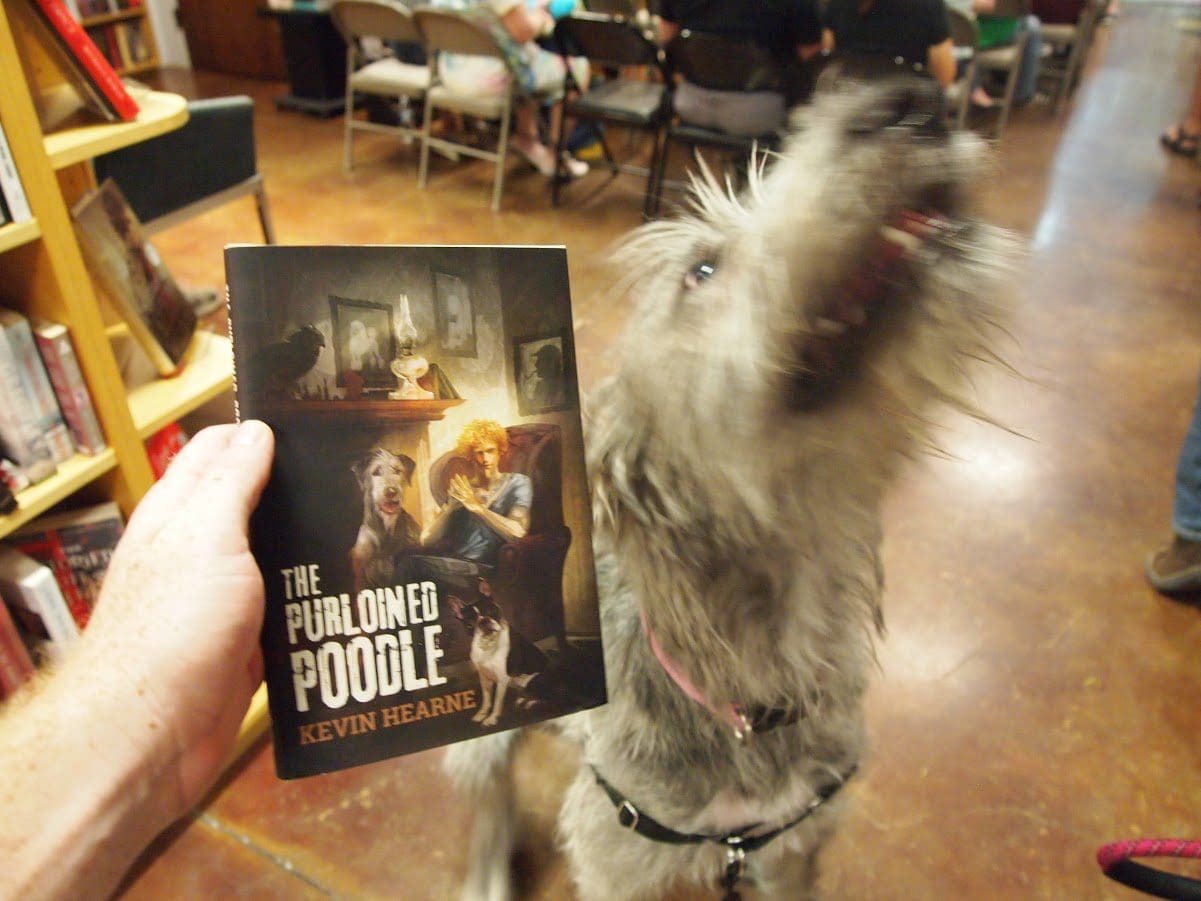
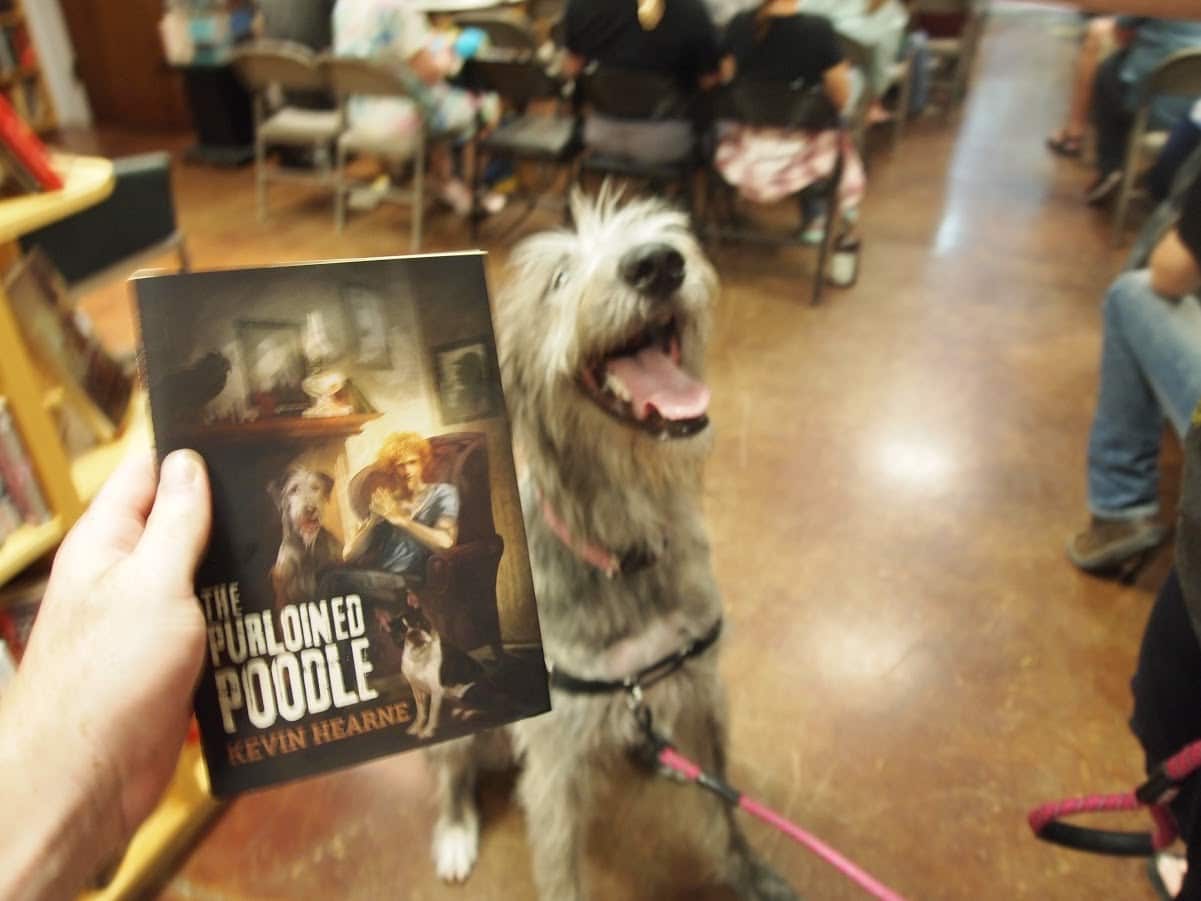
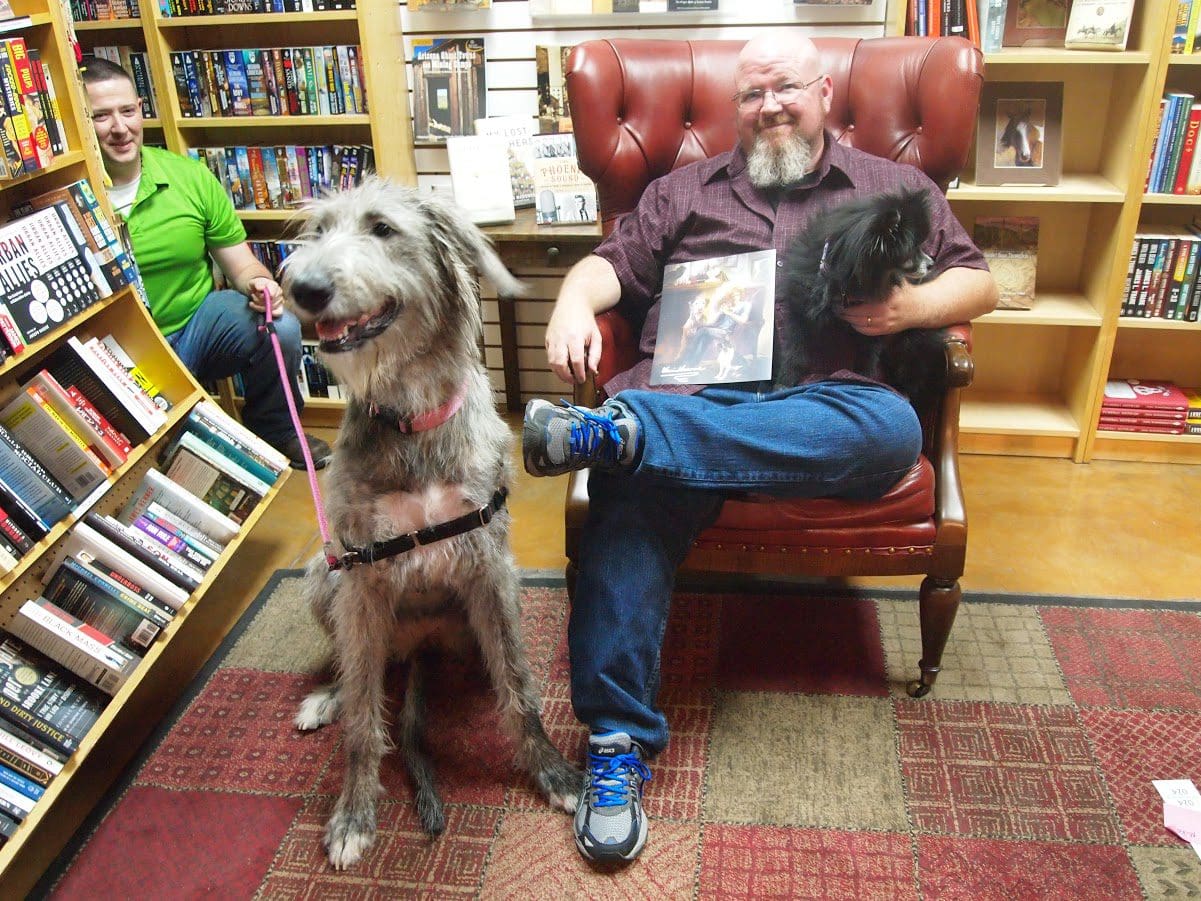
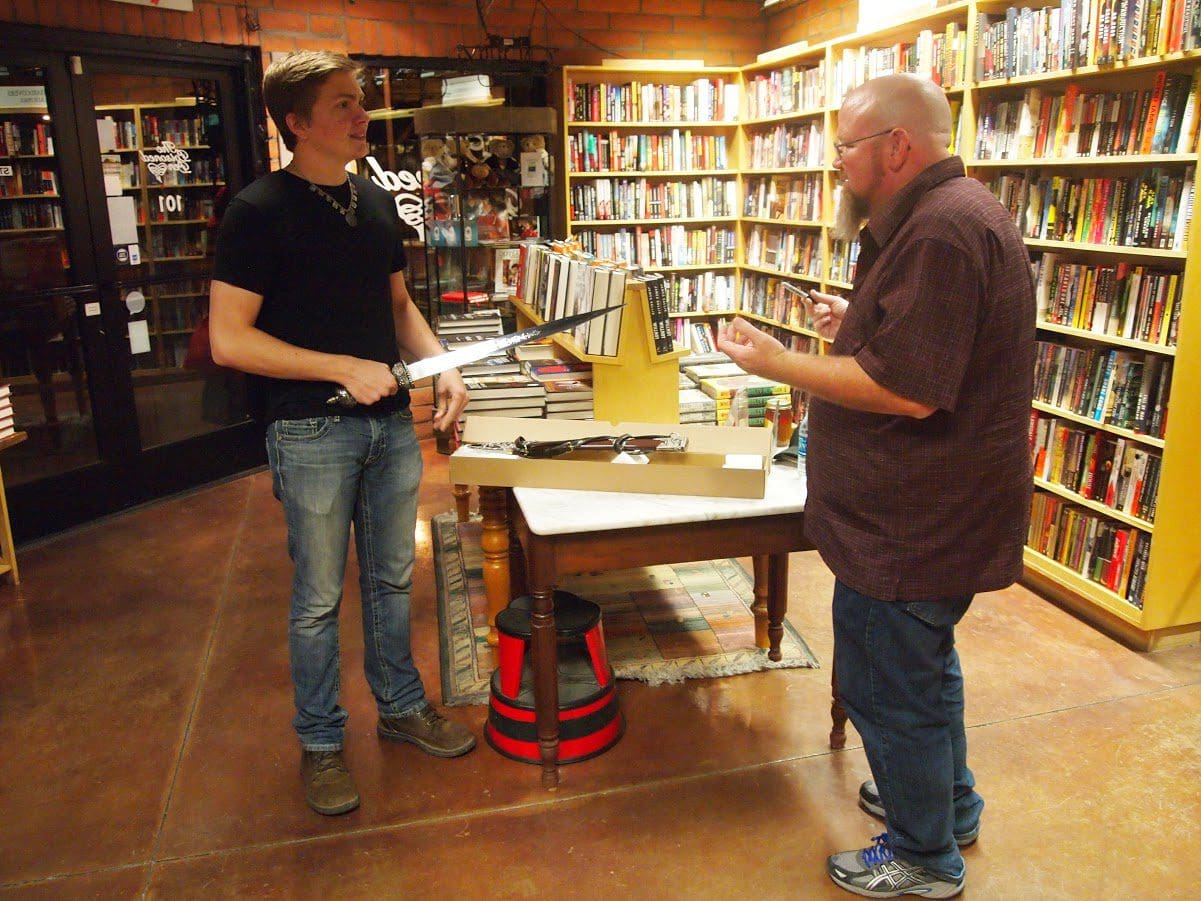

You really should watch the Livestream event to see Kevin’s reaction when he sees the Irish Wolfhound in the audience. https://livestream.com/poisonedpen/events/6376537
Signed copies of The Purloined Poodle are available through the Web Store. https://bit.ly/2d85xE8
Charlaine Harris at The Poisoned Pen
Aurora Teagarden is back in Charlaine Harris’ latest mystery, All the Little Liars. And, Charlaine was just at The Poisoned Pen to talk about and sign her book.
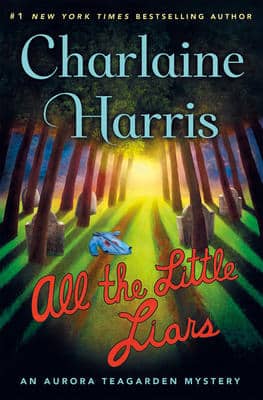
We have photos of the program.
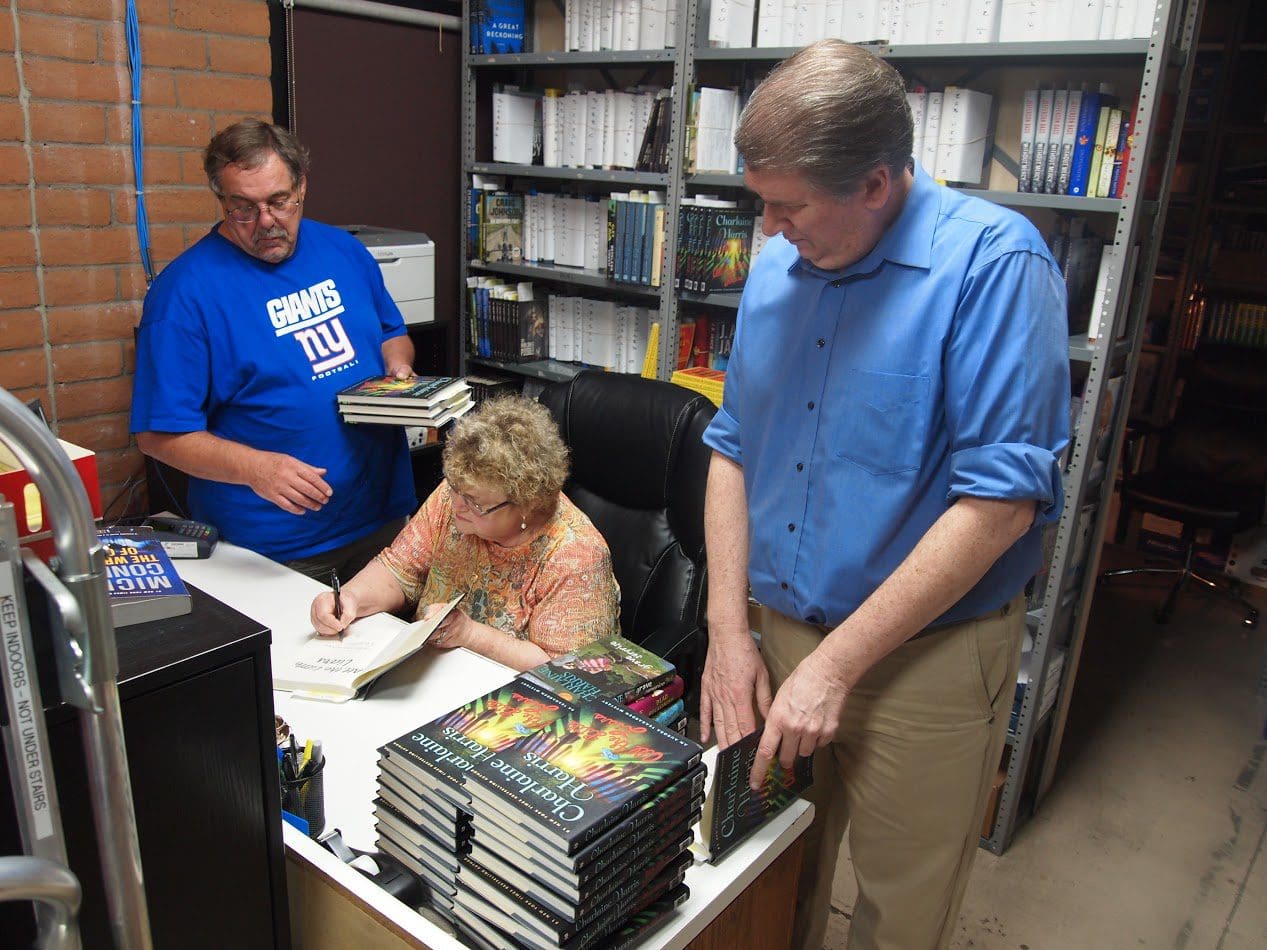
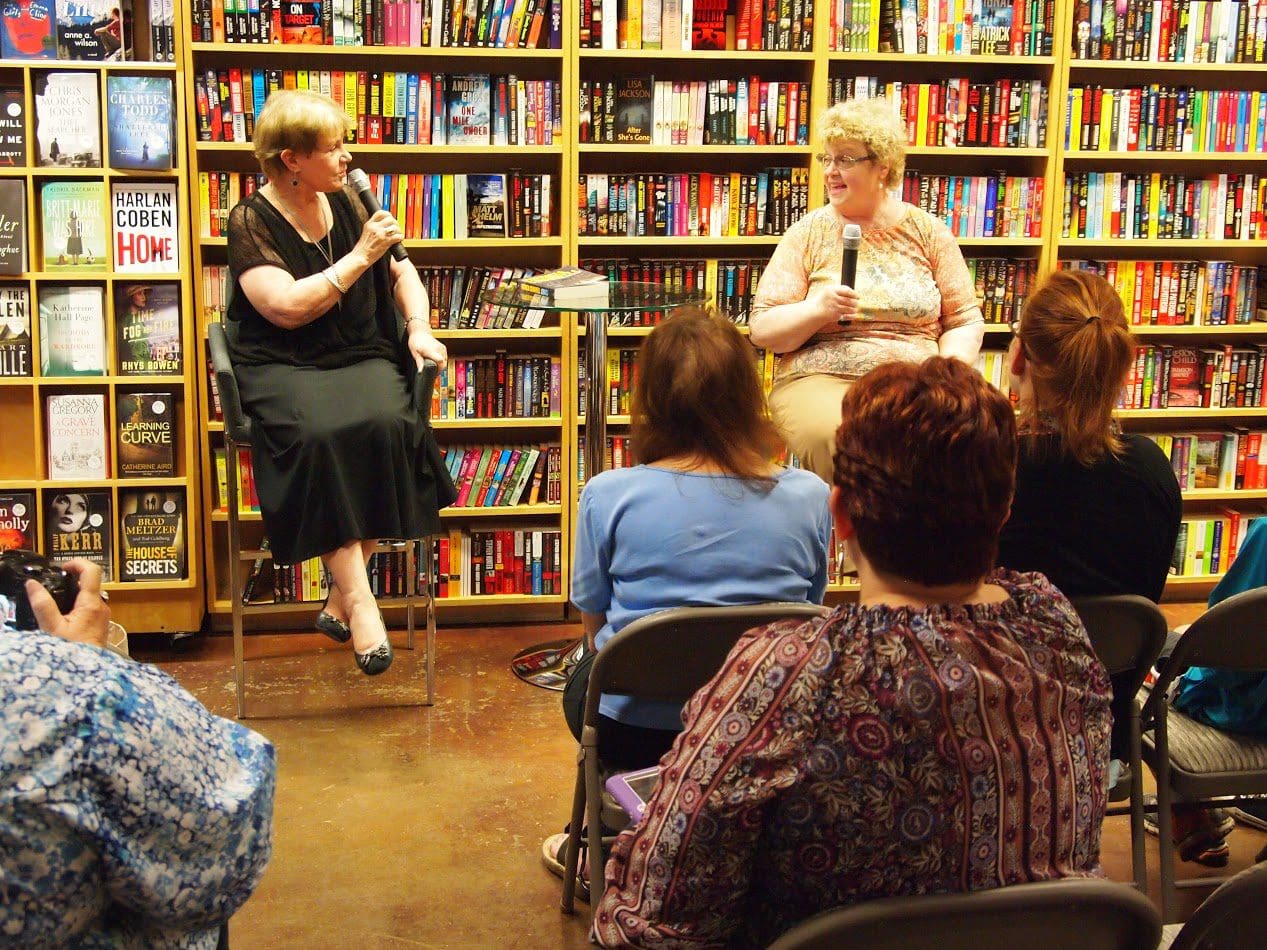
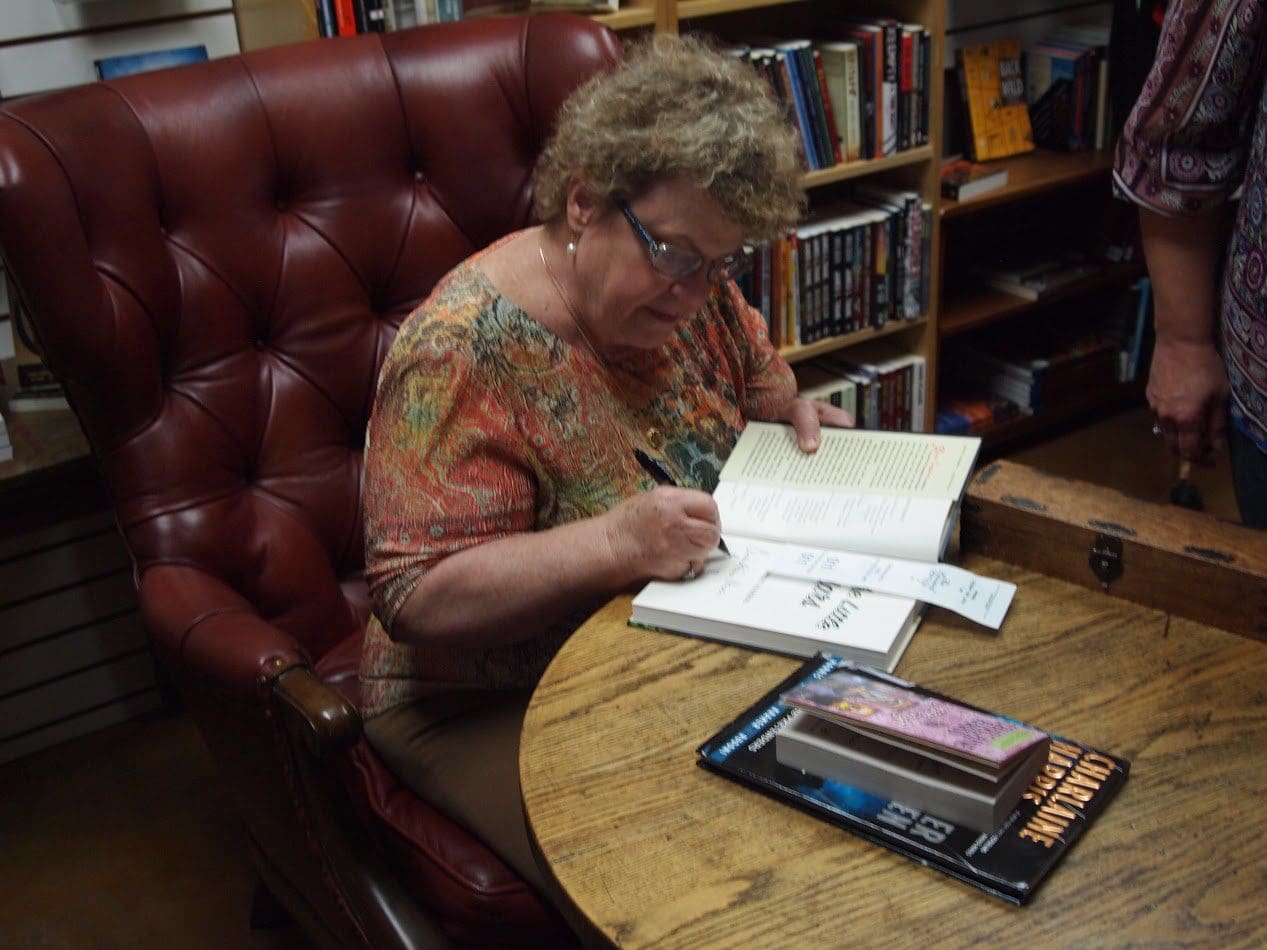
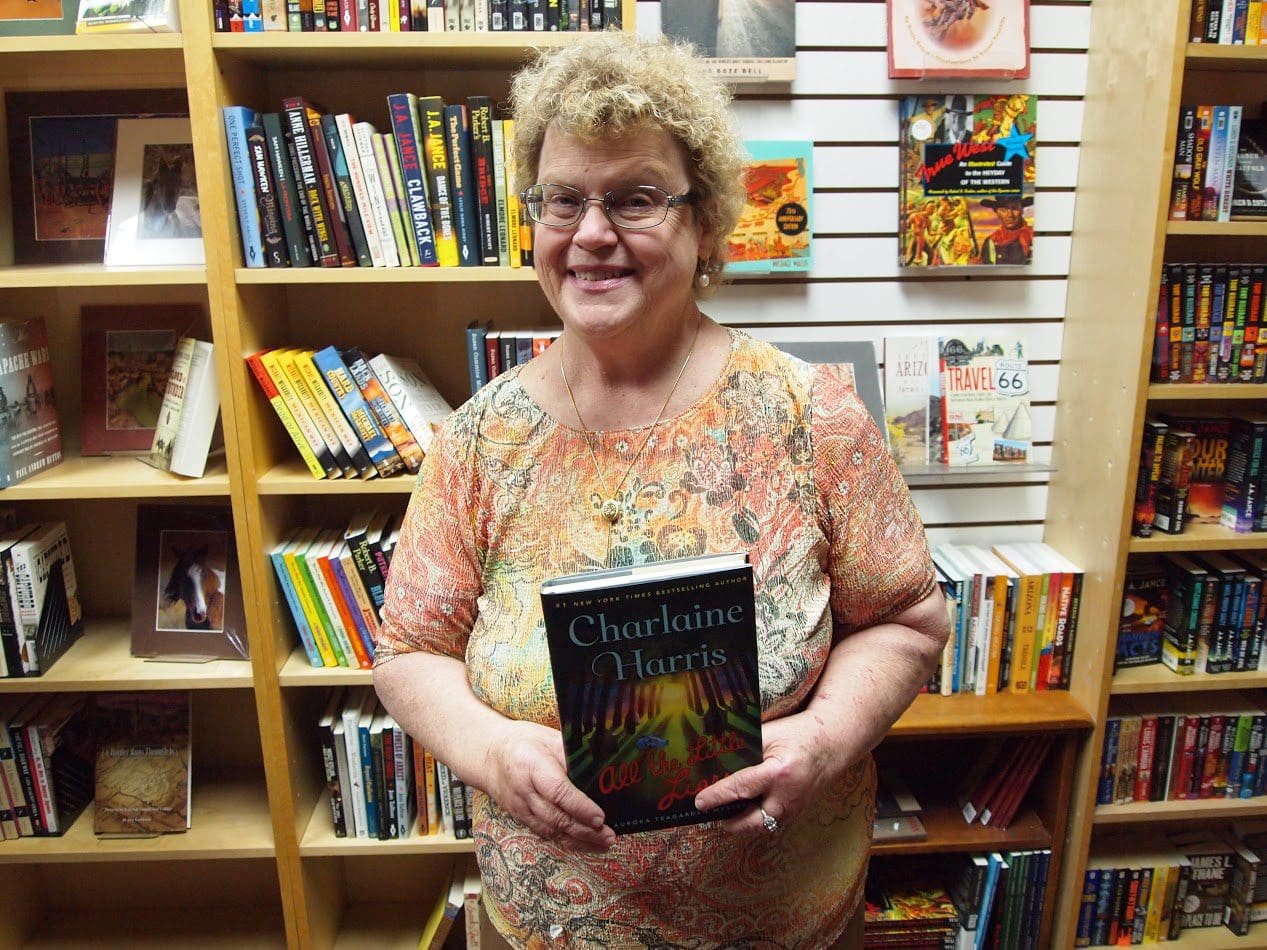
Would you like to view this fun event? You can watch it on Livestream. https://livestream.com/poisonedpen/events/6463387
Of course you can order a signed copy of All the Little Liars through the Web Store. https://bit.ly/2dKai5U


